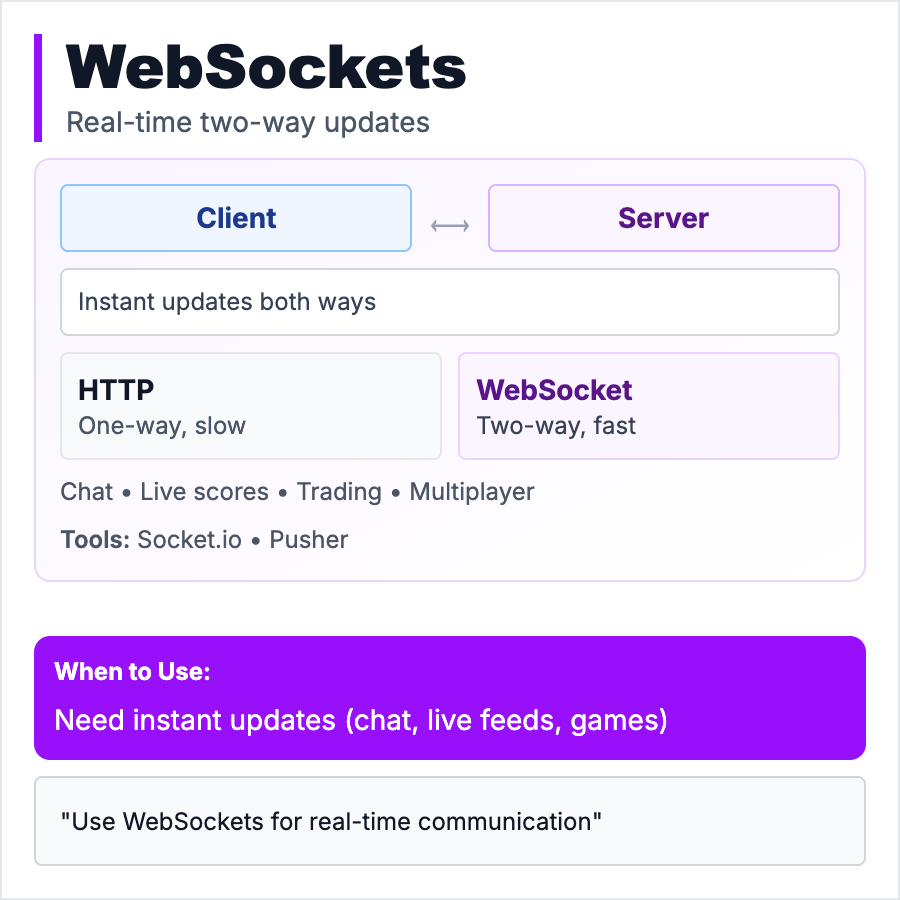
What is WebSockets?
WebSockets enable real-time, bidirectional communication between client and server over a persistent connection. Unlike HTTP (request → response → close), WebSockets stay open—server can push updates to client instantly. Perfect for chat apps, live dashboards, multiplayer games, stock tickers. HTTP: client asks "any updates?" every 5 seconds (polling). WebSockets: server says "here's an update!" when it happens. Much more efficient.
When Should You Use This?
Use WebSockets for real-time features: chat/messaging, live notifications, collaborative editing (Google Docs style), live dashboards, multiplayer games, or stock/crypto tickers. Don't use for standard CRUD APIs—HTTP is simpler. Don't use if updates can wait seconds (polling or Server-Sent Events work fine). Common libraries: Socket.io, ws, Pusher.
Common Mistakes to Avoid
- •Using for everything—most apps don't need real-time, HTTP is simpler
- •No fallback—WebSockets fail behind some proxies/firewalls, fall back to polling
- •Not handling disconnects—mobile clients disconnect often, implement reconnect logic
- •Scaling naively—WebSockets are stateful, harder to load balance than HTTP
- •No authentication—WebSockets need auth too, don't trust client
Real-World Examples
- •Slack—WebSockets for instant message delivery
- •Figma—Real-time cursor positions and collaborative editing
- •Trading platforms—Live stock prices via WebSockets
- •Discord—Voice and text chat over WebSockets
Category
System Design Patterns